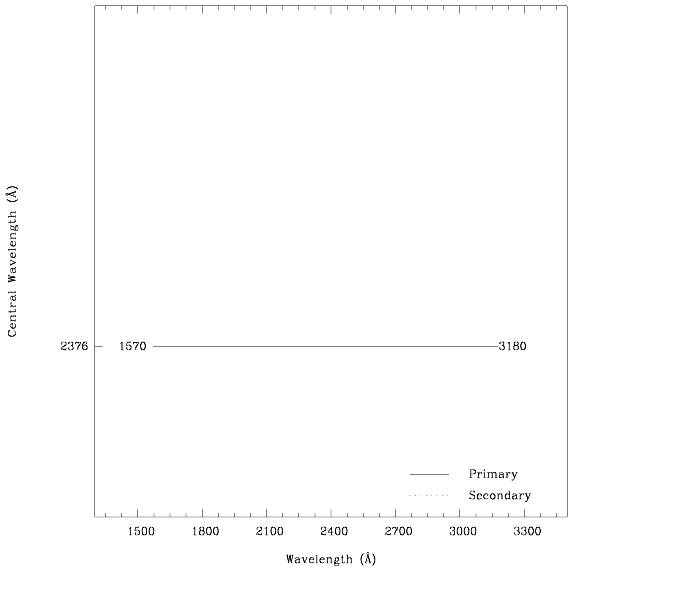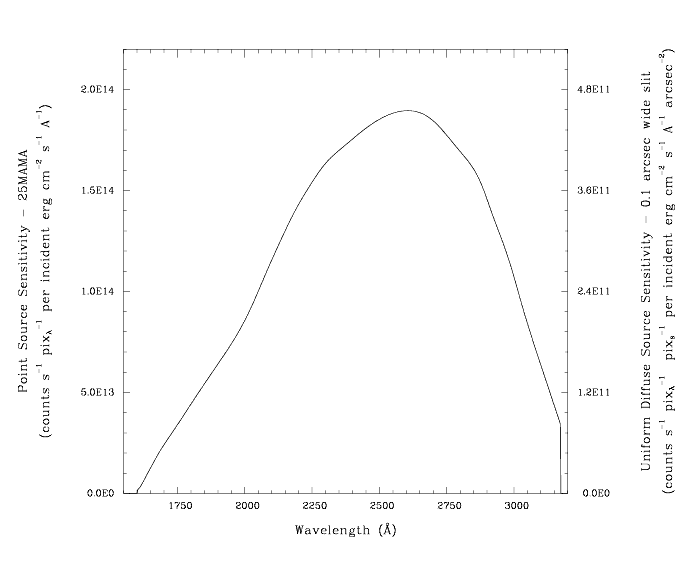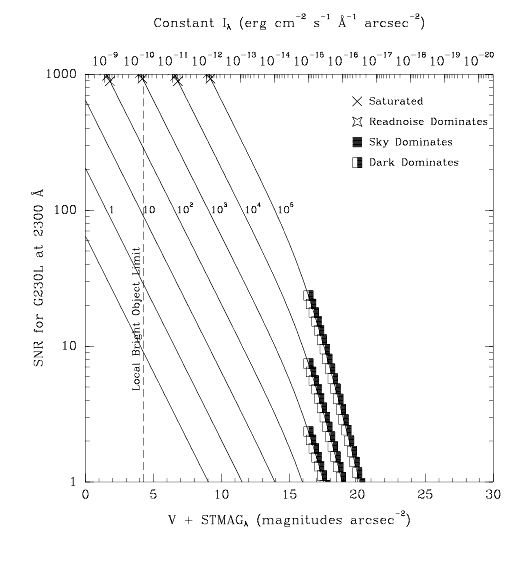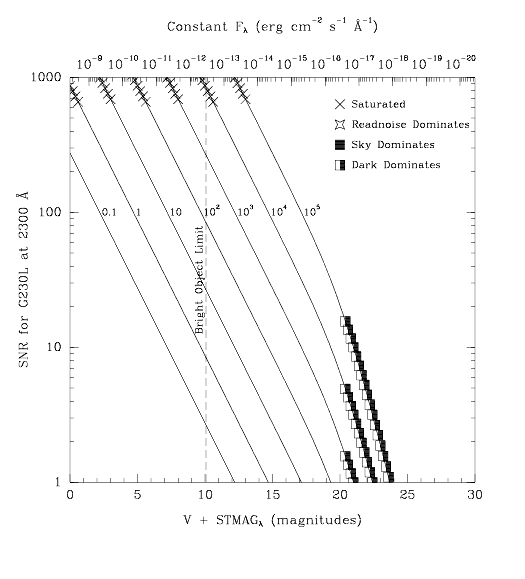



The G230L grating is used with the NUV-MAMA and has a relatively high throughput and a resolving power of ~500.
G230L is designed for observations where high spectral resolution is not required, but efficient, spatially resolved spectroscopy with full spectral coverage in the near-ultraviolet is desired.
Notice that the CCD G230LB grating mode also covers the near-ultraviolet with comparable resolution; see Comparison of G230LB and G230L for a detailed comparison of these two grating modes in that wavelength regime.
| Grating |
Spectral Range |
Average Dispersion (Å per Pixel) |
Plate Scale (arcsec / pixel) |
Tilts |
Central Wavelengths |
|
|---|---|---|---|---|---|---|
| Complete |
Per Tilt |
|||||
| G230L |
1570-3180 |
1610 |
1.58 |
0.025 |
Prime |
2376 |


Point source sensitivity assumes full transmission (zero slit losses). Diffuse source sensitivity assumes a 0.1" wide slit. To convert point source sensitivities to diffuse source sensitivities multiply the point source values by the grating spatial plate scale in units of arcseconds per pixel and by the width of the desired slit in units of arcseconds.
The top axis displays constant F values corresponding to the STMAG units (V+STMAG
values corresponding to the STMAG units (V+STMAG ) on the bottom axis. Recall that STMAG=0 is equivalent to F
) on the bottom axis. Recall that STMAG=0 is equivalent to F = 3.63E-9 erg cm-2 s-1 Å-1. The curves are labeled with exposure times in seconds.
= 3.63E-9 erg cm-2 s-1 Å-1. The curves are labeled with exposure times in seconds.




|
Space Telescope Science Institute http://www.stsci.edu Voice: (410) 338-1082 help@stsci.edu |